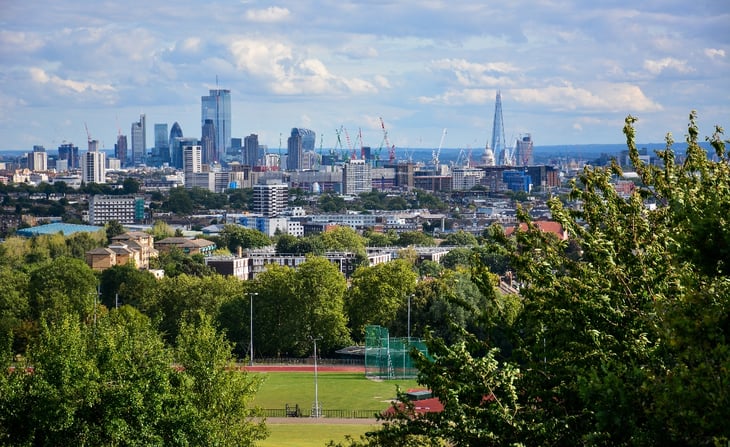A need for trees? The comparison of two towns...

By Hattie Webb | 28/11/19 14:48
3 min read
 Photo by andreyspb21,, Courtesy of www.shutterstock.com
Photo by andreyspb21,, Courtesy of www.shutterstock.com
The best time to plant a tree was 20 years ago. The next best time is now.
It is becoming more widely known and accepted that being surrounded by greenery and nature is good for us - both physically and mentally. This is no surprise to us here at Commonplace, as greenery and trees are often prioritised by communities during our digital conversations across the UK. Having said this, it seems that in certain areas, there are more pressing issues that override the need for greenery. Why could this be the case, and what could be done to sway the reputation of trees away from unnecessary aesthetic spending - to a potential lifeline?
The mental health charity Mind states that being in nature reduces stress, improves confidence and improves physical health. The World Green Building Council also show that to reap these benefits you can merely sit in a plant invaded house or office (and plants are basically mini trees right?). They emphasise that working amongst greenery can increase cognitive function, improve air quality and ventilation, leading to more sleep and overall improved performance of up to 8%.
Now back to actual trees - The UK Green Building Council summarise that due to urban greening in London, 2,200 tonnes of pollution is removed from the air each year and 2.4Mt of carbon is stored each year (1). The benefit of trees far outreaches just health and wellbeing, it is also essential for the environment. It really is no surprise then, that irrespective of geographic location, two of the five most talked about themes on Commonplace relating to healthy neighbourhoods are 'planting and greenery', and 'air quality' (with the other three being 'better walking and cycling spaces', 'feelings of safety' and 'areas of public space').
Despite this very encouraging statistic, there is variation in how people rate these needs depending on where they are - which leads me to ask: could there be place-specific external factors which alter the relative prioritisation of trees in a local area?
Now, here is how this question presented itself to me. My inquisitive mind said “compare the prioritisation of greenery in a suburban area to an urban one” - so I did. When comparing Highams Park: a ‘suburban Liveable Neighbourhood’ consultation and a Brixton ‘liveable neighbourhood’ consultation, prioritisation of green space and trees differ vastly. 32% of Highams Park respondents prioritised more plants and trees. Conversely, only 3% of Brixton respondents opted for more trees and green space. One might assume that urban residents would want more trees and green space! But of course, they prioritised reducing traffic and improving air quality instead. The irony is that more trees would improve air quality - trees are part of the solution. But at a time when the amount of visits to parks in towns and cities is increasing (7% from 2014 to 2015/16) (2), it is important to question why people don’t prioritise greenery and air quality more highly in inner cities?
It makes perfect sense that Brixton residents would prefer traffic was reduced before more trees are planted. As a local resident, I can imagine it would immediately and more drastically improve my quality of life than the addition of a few trees. Ideally, less traffic and more trees would have equal status as part of a ‘Liveable Neighbourhood’ Scheme, and kill two birds with one stone in terms of air quality - improving the health of all of us city dwellers. However, as we all know, it can be a complex process to reduce traffic. But do you know what is fairly simple? Planting trees! Well in theory at least. It actually turns out that most of London’s ground is compacted and airless meaning that 50% of urban trees don’t make it to 10 years old.
There is, however, hope; and there are success stories to tell. According to the Telegraph, getting local communities involved as much as possible gives trees the highest chance of reaching a ripe old age. The London Borough of Hackney’s “Tree Champions” scheme has worked wonders to encourage locals and transform the borough into quite an arboretum (3). At Commonplace we are fully aware that giving people the power when it comes to local issues is essential to drive positive change. But if people are not asking for trees where they are most needed, then it is less likely local authorities will plant them.
I strongly hope that with environmental concerns being at the forefront of our minds, and with politicians responding to this, urban greening will get the urgency it deserves. The problem is, most people like trees, but do not say ‘I need them!’. I do not know how public opinion can be swayed overnight, but if you have read this far, all I can say is tell someone how important trees are, and ask for more in your next Commonplace local conversation.
As the old Chinese proverb says: “The best time to plant a tree was 20 years ago. The next best time is now”.
(1) https://www.ukgbc.org/biodiversity/
(2) https://www.heritagefund.org.uk/sites/default/files/media/research/state_of_uk_public_parks_2016_research_report.pdf
(3) https://www.telegraph.co.uk/gardening/problem-solving/why-we-should-plant-more-urban-trees/
.png)